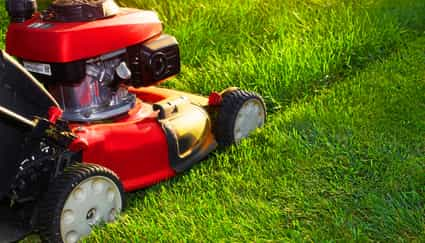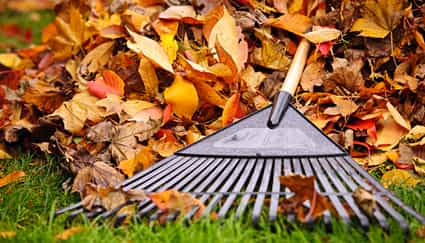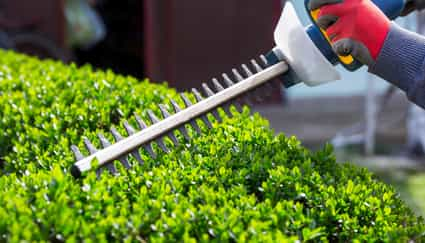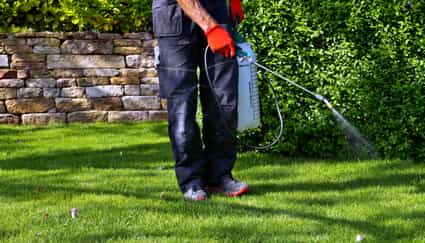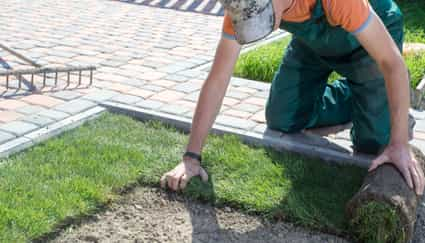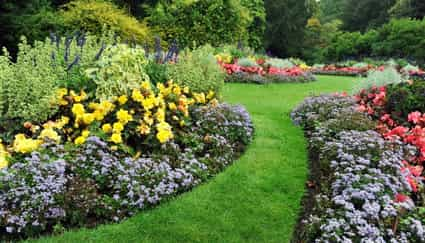Pittsburgh, PA landscaping service at the click of a button
A new, easy way to get landscaping in Pittsburgh. Choose from 50+ services including mowing, cleanups, installations and more.
What services are you looking for?

4.7 / 5
★★★★★
500,000+ reviews
As seen in...
These Pittsburgh landscaping professionals are ready for work
 Top Performer
Top Performer

Chad Thomas
★★★★★

Top
Pro
C&Ts Cleaning Solutions
Pittsburgh, PA 15214
"We are a boutique cleaning and landscaping company that serves Pittsburgh and surrounding areas. Our mission is to provide great cleaning and landscaping services to all our clients. We hope that you enjoy our company as we complete your services."

Silver Tier
 In High Demand
In High Demand

Taiwan Givens
★★★★★

Rising
Star
2025
Givens Home & Lawn Care LLC
Pittsburgh, PA 15235
"Hello, my name is Ty. The reason I started my company was that I like working outside. I like being able to work by myself. I've got years of experience delivering all kinds of landscaping work, including weed removal, planting, mulching, and much more."

Bronze Tier

Quick Response Time
 Fast Response
Fast Response

Jason Millward
★★★★★

Top
Pro
Straight Edge Lawn Care
Pittsburgh, PA 15235
"We are a small start-up company between myself and my nephew. Currently, we are offering pressure washing, basic landscaping, fertilization, and prevention services. If you schedule in advance, we also do tree trimming with the hope of being able to provide more services as we continue to grow."

Bronze Tier
Try some of our more popular services
Happy customers all over Pittsburgh
LawnStarter Lawn Care Service
, , ,

5
★★★★★
Grass and bushes look great. Thank you.
Mark B. in Pittsburgh, PA
LawnStarter Lawn Care Service
, , ,

5
★★★★★
Grass and bushes look great. Thank you.
Mark B. in Pittsburgh, PA
LawnStarter Lawn Care Service
, , ,

5
★★★★★
Bobby does a great job.
Stephen B. in Pittsburgh, PA

Cleanups
by David Rasulov
for Claudia J. in Pittsburgh, PA

Leaf Removal
by Vincent Daniele
for Mark B. in Pittsburgh, PA

Bush Trimming
by Vincent Daniele
for Mark B. in Pittsburgh, PA

Cleanups
by Vincent Daniele
for Stephen B. in Pittsburgh, PA

Cleanups
by Vincent Daniele
for Jessica S. in Pittsburgh, PA

Cleanups
by Vincent Daniele
for Natalee W. in Pittsburgh, PA

Bush Trimming
by David Rasulov
for Gregory S. in Pittsburgh, PA

Leaf Removal
by Vincent Daniele
for Laurie D. in Pittsburgh, PA

Leaf Removal
by David Rasulov
for Jeff S. in Pittsburgh, PA

Bush Trimming
by David Rasulov
for Allan Z. in Pittsburgh, PA

Cleanups
by Vincent Daniele
for Joe L. in Pittsburgh, PA

Bush Trimming
by David Rasulov
for Mary M. in Pittsburgh, PA

Leaf Removal
by Tajean DeGore
for Mike S. in Pittsburgh, PA

Leaf Removal
by Jennifer Frain
for Geetha K. in Pittsburgh, PA
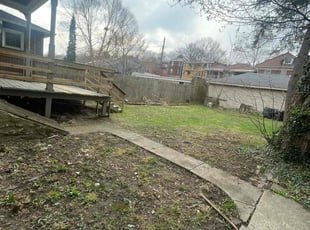
Leaf Removal
by Jennifer Frain
for Terrence M. in Pittsburgh, PA

Bush Trimming
by David Rasulov
for Gidget W. in Pittsburgh, PA

Weeding
by David Rasulov
for Gidget W. in Pittsburgh, PA

Bush Trimming
by David Rasulov
for Kimberlee U. in Pittsburgh, PA

Leaf Removal
by David Waksmunski
for Rosalind J. in Pittsburgh, PA

Cleanups
by Schonce Slappy
for Angie J. in Pittsburgh, PA

Leaf Removal
by David Rasulov
for Ebony C. in Pittsburgh, PA

Bush Trimming
by Vincent Daniele
for Coneath E. in Pittsburgh, PA

Bush Trimming
by Vincent Daniele
for Percy J. in Pittsburgh, PA

Bush Trimming
by Jaquayla Gilmore
for Gidget W. in Pittsburgh, PA
Pittsburgh, PA -
Apr 23, 2025
Pittsburgh Landscaping Facts
Demand for Landscaping by Month
| January |
28
|
| February |
24
|
| March |
50
|
| April |
91
|
| May |
100
|
| June |
70
|
| July |
70
|
| August |
49
|
| September |
38
|
| October |
29
|
| November |
26
|
| December |
16
|
Landscape Services & Avg Prices
| Landscape Maintenance (monthly) | $186 |
| Landscape Design & Build | $3,696 |
| Built a Retaining Wall | $4,505 |
| Lawn Resod | $1,890 |
| Install a Pond | $3,060 |
| Install a French Drain | $3,780 |
| Contruct a Patio | $4,028 |
| Plant a Flowerbed | $1,440 |
| Xeriscape a Yard | $10,680 |
| Reslope a Lawn | $1,725 |
| Remove a Stump | $252 |
| Install a Stone Walkway | $1,462 |
Resources
Recent Reviews
We encourage feedback from all customers to ensure we are delivering the best service possible.
"Great yard clean up."
★★★★★
Casey F.
- Sep 22, 2024
- Pittsburgh, PA
"Excellent job as always. Always helps me with scheduling odd jobs. Gets the job done quickly. Hats"
★★★★★
Dorothy E.
- Oct 11, 2024
- Pittsburgh, PA
"They did a great job! They worked really hard and were very professional."
★★★★★
Dwayne W.
- Dec 08, 2024
- Pittsburgh, PA
"Service was good!!"
★★★★★
Darlene M.
- Nov 05, 2024
- Pittsburgh, PA
"Thank you!"
★★★★★
Danyell B.
- Aug 15, 2024
- Pittsburgh, PA
"Great guy! Did an amazing job with my yards! Made them look great!"
★★★★★
James K.
- Nov 22, 2023
- Pittsburgh, PA
"Always a phenomenal job"
★★★★★
thomas b.
- Nov 18, 2023
- Pittsburgh, PA
"THANK YOU IS NICE"
★★★★★
Jack F.
- Nov 13, 2023
- Pittsburgh, PA
"Really prefer the leaves bagged rather than thrown over the fence. Some leaves were left by the A/C unit"
★★★★
Barry S.
- Nov 04, 2023
- Pittsburgh, PA
"Excellent Job"
★★★★★
James B.
- Sep 06, 2023
- Pittsburgh, PA
"Thank you great work"
★★★★★
Marco s.
- Aug 13, 2023
- Pittsburgh, PA
"I love you guys service. Mallard has been such a mess over the past couple days just really helped."
★★★★★
Alice B.
- Jul 28, 2023
- Pittsburgh, PA
★★★★★
"Excellent Job"
James B.
- Sep 06, 2023
- Pittsburgh, PA
Leaf Removal
by Frank Damico
(Damicos Landscaping)
★★★★★
"Thank you great work"
Marco s.
- Aug 13, 2023
- Pittsburgh, PA
Leaf Removal
by LeRondell Odom
(L.L.Sharper Edge)
★★★★★
"I love you guys service. Mallard has been such a mess over the past couple days just really helped."
Alice B.
- Jul 28, 2023
- Pittsburgh, PA
Leaf Removal
by Wyatt Melius
(Gardenalia)
★★★★
"No heads up/notification before service day or date. Thank you for the service though all was good!"
Anthony C.
- Jul 12, 2023
- Pittsburgh, PA
Lawn Treatment
by William Thorn
(Steel City Blade Runners Llc)
★★★★★
"Looks Great! Thank you so much for working so hard. I know it wasn’t easy in this heat and we appreciate you so much."
Shane S.
- Jul 03, 2023
- Pittsburgh, PA
Leaf Removal
by Frank Olander
(Olander Tree & Landscape)
★★★★★
"Great job Terrence,, it looks amazing, thank you for taking time to get this done"
Robert F.
- Jul 02, 2023
- Pittsburgh, PA
Leaf Removal
by Colton Seigfried
(Rettew Associates Inc)
★★★★★
"Great job"
mike e.
- May 22, 2023
- Pittsburgh, PA
Leaf Removal
by Frank Olander
(Olander Tree & Landscape)
★★★★★
"I love the job they did , my property looks wonderful thanks again ."
Eugene J.
- Apr 28, 2023
- Pittsburgh, PA
Leaf Removal
by Frank Olander
(Olander Tree & Landscape)
★★★★
"The backyard was untended. So, he did as much as could be expected. The back yard will need to be reseeded this fall.
Hopefully as grass grows more in spring, it will look better and better. Thanks."
Janice G.
- Apr 21, 2023
- Pittsburgh, PA
Leaf Removal
by Robert Mcdowell
(Achieva Resource)
★★★★★
"Great job great service"
Linda C.
- Apr 14, 2023
- Pittsburgh, PA
Lawn Treatment
by Erik Giles
(Absolute Lawns LLC)
★★★★★
"Lawn looks perfect!"
Amber K.
- Apr 05, 2023
- Pittsburgh, PA
Leaf Removal
by Dan Mcdowell
(La Quatra Bonci AssociationInc)
★★★★★
"Awesome"
Roberto S.
- Mar 30, 2023
- Pittsburgh, PA
Lawn Treatment
by Jacob Devers
(Devers Landscaping Inc)
★★★★★
"Speedy clean up, and great job."
Ashley C.
- Mar 07, 2023
- Pittsburgh, PA
Leaf Removal
by LeRondell Odom
(L.L.Sharper Edge)
★★★★★
"Great job!"
Donna R.
- Mar 03, 2023
- Pittsburgh, PA
Leaf Removal
by Shawn Maust
(Maust Lawn Care & Landscaping)
★★★★
"Excellent job in the back yard and right side."
Sheila M.
- Feb 22, 2023
- Pittsburgh, PA
Leaf Removal
by Shawn Maust
(Maust Lawn Care & Landscaping)
★★★★★
"Great service!"
Alberto S.
- Jan 05, 2023
- Pittsburgh, PA
Lawn Treatment
by Timothy kay
(Cheapscape landscape)
★★★★
"Thank you!!! Happy holidays."
Rowena M.
- Dec 15, 2022
- Pittsburgh, PA
Leaf Removal
by Frank Damico
(Damicos Landscaping)
★★★★★
"Very polite and patient"
Leonard S.
- Nov 15, 2022
- Pittsburgh, PA
Landscaping
by Chaun Lee
(A hand up LLc)
★★★★★
"Thanks so much Kierra! Our lawn looks amazing!! You did such a fantastic job while also being efficient and neat. We also appreciate you exercising your patience and keeping us informed on what needed to be done. Thank you and look forward to working with you again in the future!"
Mendy R.
- Nov 09, 2022
- Pittsburgh, PA
Bush Trimming
by Kierra Davis
(Wearecreatorsllc)
★★★★★
"Charles did a great job of cleaning up the yard and clearing the property of leaves. Everything looks great and we are happy with the results!"
Tim M.
- Nov 09, 2022
- Pittsburgh, PA
Leaf Removal
by Robert Mcdowell
(Achieva Resource)
Loading...
Page: 1 / 100
Book one of our top Pittsburgh landscaping professionals

Chad Thomas
★★★★★
(1 Ratings)
C&Ts Cleaning Solutions
Pittsburgh, PA 15214
We are a boutique cleaning and landscaping company that serves Pittsburgh and surrounding areas. Our mission is to provide great cleaning and landscaping services to all our clients. We hope that you enjoy our company as we complete your services.

Silver Tier

Taiwan Givens
★★★★★
(24 Ratings)
Givens Home & Lawn Care LLC
Pittsburgh, PA 15235
Hello, my name is Ty. The reason I started my company was that I like working outside. I like being able to work by myself. I've got years of experience delivering all kinds of landscaping work, including weed removal, planting, mulching, and much more.

Bronze Tier

Quick Response Time

Jason Millward
★★★★★
(26 Ratings)
Straight Edge Lawn Care
Pittsburgh, PA 15235
We are a small start-up company between myself and my nephew. Currently, we are offering pressure washing, basic landscaping, fertilization, and prevention services. If you schedule in advance, we also do tree trimming with the hope of being able to provide more services as we continue to grow.

Bronze Tier

Colt Flowers
★★★★★
(16 Ratings)
Colt's Landscaping/grass cutting/weed trimming/mulching
Pittsburgh, PA 15216
I always wanted to have my own business, and I enjoy the work that I do. I like being outdoors, so I chose this field of landscaping. I like to cut grass and weeds. Whether I do jobs or any other type of work, I'm a hard worker. Also, I want to be my boss. I have coworkers who work for my company, and we grow together.

Bronze Tier

Quick Response Time

Colt Flowers
★★★★★
(5 Ratings)
Coltdawg's LawnCare
Pittsburgh, PA 15216
I always wanted to have my own business, and I enjoy the work that I do. I like being outdoors, so I chose this field, landscaping, because I like to cut grass, weed whack, do more jobs, and any other type of work. Plus, I'm a hard worker. I want to be my own boss and have coworkers work for my company and grow.

Silver Tier

Quick Response Time

Jereme Johnson
★★★★★
(143 Ratings)
Johnsons Family Landscaping
3200 Motor Street,
Pittsburgh, PA 15204
I'm very passionate about landscaping. I try my best to do grade-A work for each customer. I'm a one-man crew. I think I work better than everyone else. I like to make all customers happy. I don't take shortcuts, and I will never come to your house being lazy.

Bronze Tier

Quick Response Time

Tydarius Walker
★★★★★
(1 Ratings)
Restoring grace cleaning business LLC
Pittsburgh, PA 15233
Restoring Grace Cleaning Business is always on your side to get the job done and correct. Thank you for being a loyal customer.

Silver Tier

Quick Response Time

Majestic Grigg
★★★★★
(34 Ratings)
Magic Landscaping Services
752 Clarissa Street,
Pittsburgh, PA 15219
I love to be of service to others, and I look forward to satisfying your landscaping needs. My goal is to tackle any job, big or small, quickly and efficiently. You'll be sure to be asking for service the magic way. Thank you for considering my services, and I appreciate any feedback you have.

Silver Tier

Marlon Hardman
★★★★★
(133 Ratings)
Majestic32Scapesllc
606 Liberty Avenue,
Pittsburgh, PA 15222
I've been in the construction field for over 20 years. Well-skilled in several areas, I wanted to focus on one field, and I chose landscape/lawn care. I take pride in my work and am amazed at the outcome of every project I take on. Thank you for choosing Majestic32Scapesllc.

Bronze Tier

Peter Kotz
★★★★★
(6 Ratings)
Hesperides Landscaping
515 Cato Street,
Pittsburgh, PA 15213
My name is Peter Kotz. I have 2 years of experience in landscaping, and I have decided to start my own business. I promise to deliver high-quality, personalized results to each and every customer. I am committed to providing open and fast communication to understand your specific needs and bring to life the ideas you have for your property.

Silver Tier

Quick Response Time

Jacob Wiegand
★★★★★
(13 Ratings)
For the love of lawns
2118 Reis Run Road,
Pittsburgh, PA 15237
This summer is the first year that I am operating and trying to gather a friendly customer base. The work I provide includes grass cutting, landscaping, tree services, climbing removal/pruning, planting, pressure washing, etc. If you see this profile and want an estimate, please reach out.

Bronze Tier

Desmond Jackson
★★★★★
(57 Ratings)
DSLawnCare Service LLC
Pittsburgh, PA 15235
Hello! DSLawnCare is here to serve your lawn care needs and make your lawn look fresh and clean. I offer a range of residential services and am happy to help. I am a local service provider and can travel to various neighborhoods as needed.

Bronze Tier
Pittsburgh Landscaping Projects by Season
Pittsburgh landscaping is an all-year endeavor, and this seasonal calendar will help you time these common landscaping projects in the Steel City.
Spring
- Lawn Care: Resume mowing in April.
- Mulch: Add mulch to your gardens. It always looks so good in the spring.
- Planting: The last frost is in late April to mid-May, so feel free to plant everything except annuals (annuals after Mother’s Day).
- Shrub Pruning: Do this in early spring to encourage new growth.
- Irrigation: Begin watering in mid-May or early June.
- Hardscaping: Install hardscaping after Mother’s Day. The ground has softened, and your concrete will cure better in warmer temps.
- Landscape Lighting: The soil should be soft enough to dig trenches, place fixtures, and bury wires.
- Fencing: Temperatures need to be consistently above 50 degrees Fahrenheit to install fencing. If you’ve ever used a post-hole digger, you know the struggle is real if the ground isn’t soft.
Summer
- Lawn Care: Keep up your weekly mowing schedule.
- Irrigation: Install a sprinkler system and/or a drip hose for your lawn, garden beds, and trees.
- Landscape Lighting: Maintain existing fixtures by checking for cracked lenses and frayed wiring.
- Fencing: Excellent time to install a new fence or maintain an existing one.
Fall
- Lawn Care: Mowing season winds down in November as grass growth slows.
- Leaf Cleanup: Bag leaves, or hire a local leaf removal crew.
- Mulch: Mulch gardens to protect plants for winter.
- Planting: Cut back perennials and plant bulbs to bloom in the spring.
- Irrigation: Winterize your system before temps dip below 32 degrees Fahrenheit.
- Hardscaping: While the ground is still soft and the weather is mild, consider adding a fire pit or paver walkway.
- Landscape Lighting: Add until late September or before the ground freezes.
- Fencing: Installation, repairs, and painting/staining until late September.
Winter
- Hardscaping: Plan spring projects now. A simple patio design can take 3 to 4 weeks for a landscape designer to create, while larger projects with sitting walls, a fire pit, and an outdoor kitchen might take several months to finalize.
- Shrub Pruning: Late winter or early spring.
If you're looking for landscape design or help with regular lawn care/ landscaping tasks such as weeding flower beds, pruning shrubs, or hardscaping, LawnStarter's Pittsburgh landscaping professionals are just a few clicks away.

Neighborhoods we service in Pittsburgh, PA
Beechview
Bluff
Broughton
Central Northside
Churchill
Crawford-Roberts
Devonwood Drive
East Carnegie
East Liberty
Ford Avenue
Ingram
Lawrenceville
Northview Heights
Ohio Township
Polish Hill
Ross Twp
Scott Near Vanadium
Swisshelm Park
WilkinsTownship
Zip Codes
15201
15202
15203
15204
15205
15206
15207
15208
15209
15210
15211
15212
15213
15214
15215
15216
15217
15218
15219
15220
15221
15222
15223
15224
15225
15226
15227
15228
15229
15230
15231
15232
15233
15234
15235
15236
15237
15238
15239
15240
15241
15242
15243
15244
15250
15251
15252
15253
15254
15255
15257
15258
15259
15260
15261
15262
15264
15265
15267
15268
15270
15272
15274
15275
15276
15277
15278
15279
15281
15282
15283
15286
15289
15290
15295

